If you are ever faced with having to use a fire extinguisher in anger you need it to do exactly what it’s supposed to – extinguish a fire. Mostly, fire extinguishers will never get used, and sit on their bracket without most users giving them a second thought, but there are still numerous reasons that can cause them to fail. It is critical that your fire extinguishers get serviced on an annual basis and GetTesting can provide this for you with minimal disruption and expert advice
With public liability, professional indemnity & failure to function insurance
Same great service for blue chips or sole traders
No ‘technicians’ – qualified service engineers only
Testing arranged to cause minimum disruption
Call us today on 0115 727 0160 or Get a Quote online
What is fire extinguisher servicing?
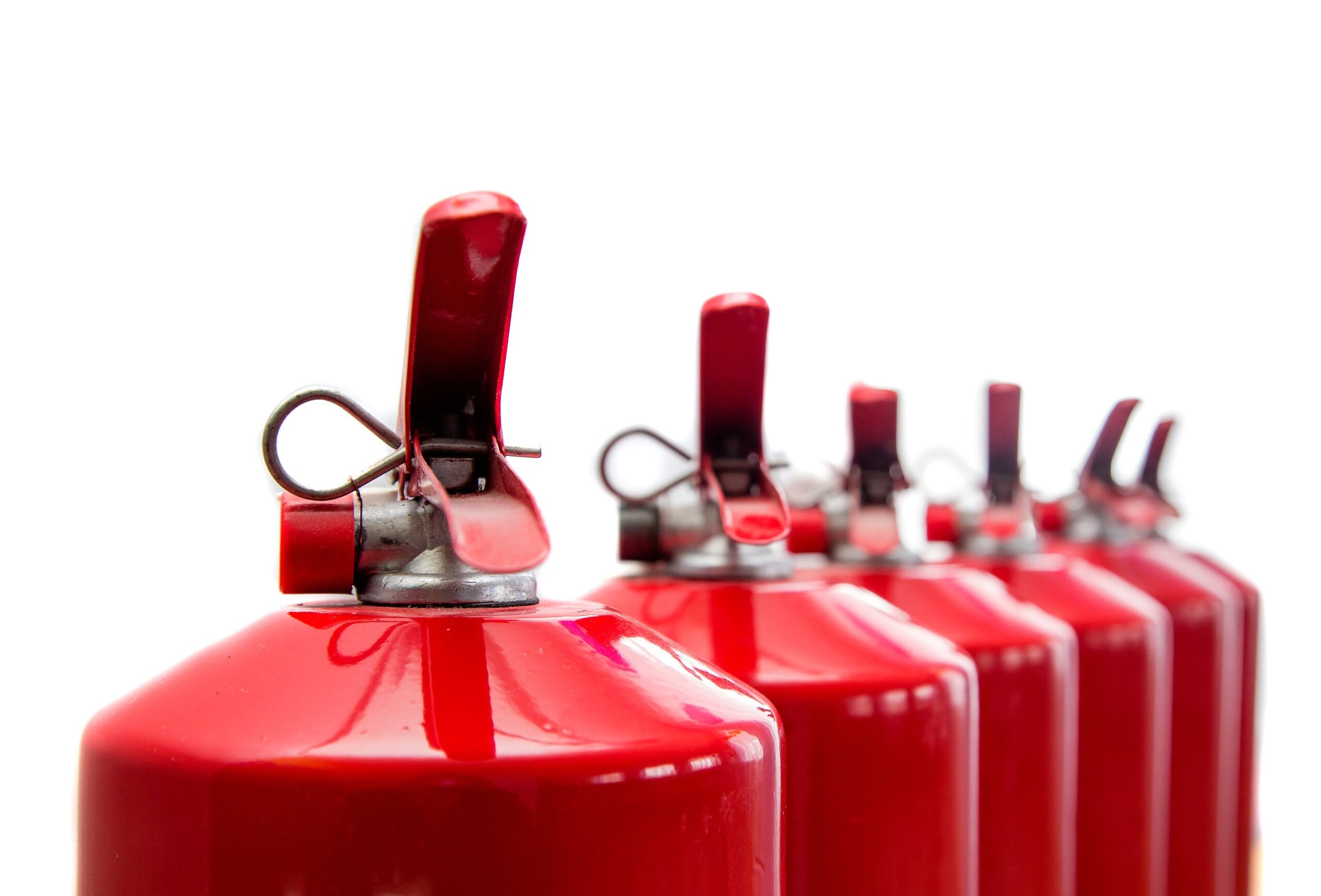
Fire extinguisher servicing is a process where a trained engineer performs a series of inspections on the fire extinguishers installed in a building. These include checking the contents of the extinguisher to make sure it hasn’t leaked, lost pressure or been used, checking around the body of the extinguisher for damage or rust & around the functional parts, such as the handles, valve and hose to make sure they won’t impede its use when you need it.
Quick Quote
Why do I need to perform fire extinguisher servicing?
First and foremost it’s important to have the piece of mind that your fire extinguishers are in good working order. They are a pressure vessel and over time things can go wrong. Something as simple as a damaged o-ring could lead to leakage and pressure escaping. An extinguisher that doesn’t work when needed isn’t much use to anybody.
Monthly visual inspections
Some simple monthly inspections should be undertaken by a responsible person from within the organisation:
- • Check the extinguisher is in the correct place & hasn’t been ‘borrowed’
- • That there’s no obstructions that would prevent a user getting to the extinguisher
- • Operating instructions (label/graphics on the body) are clear, legible and facing forwards
- • The fire extinguishers are full and not damaged
- • The pressure is within the recommended levels (needle in the green zone)
- • The tamper seals or indicators are in place
If anything is out of order you should record this in your fire log book & contact your servicing supplier if anything needs further action, such as a recharge or replacement.
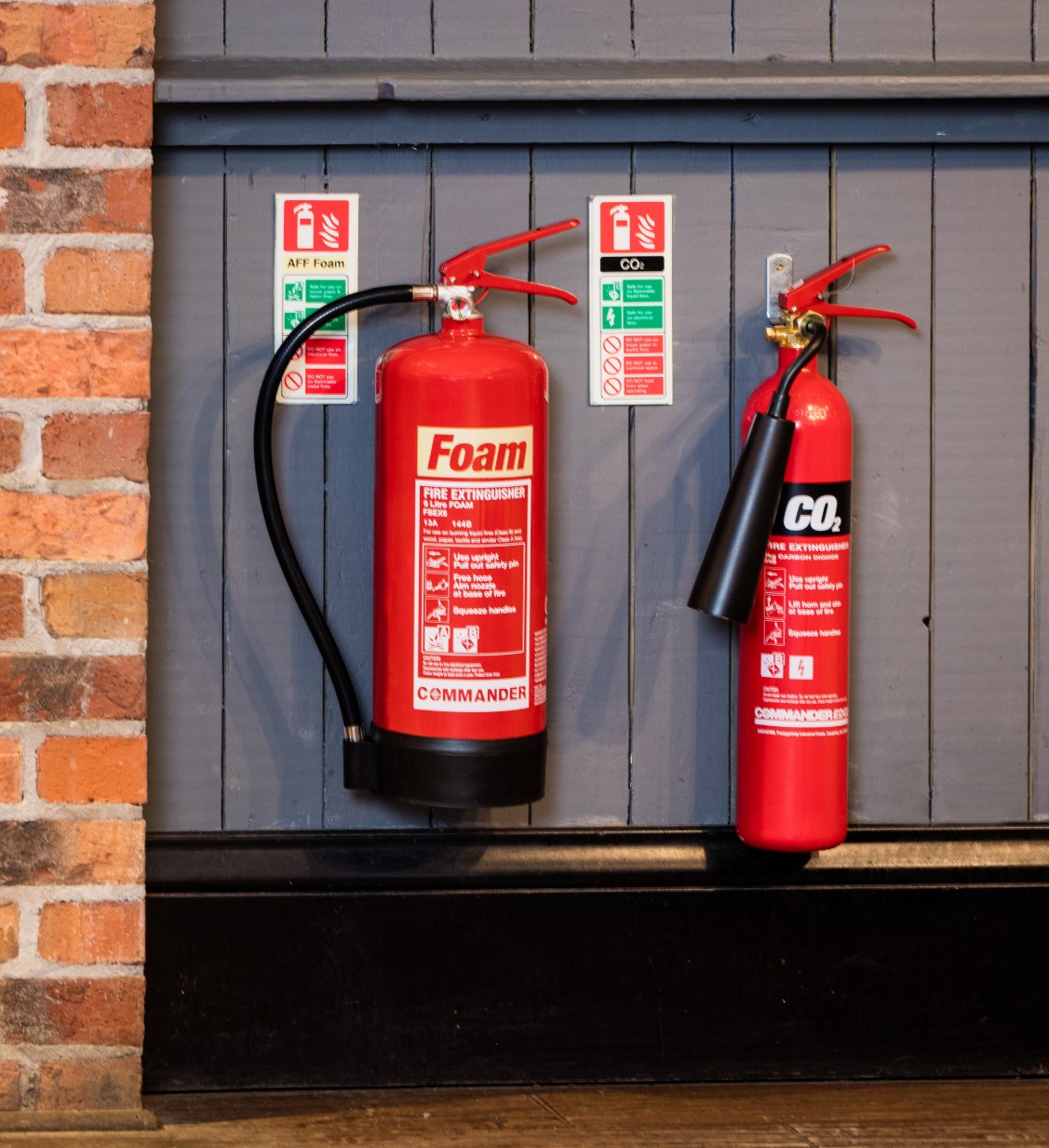
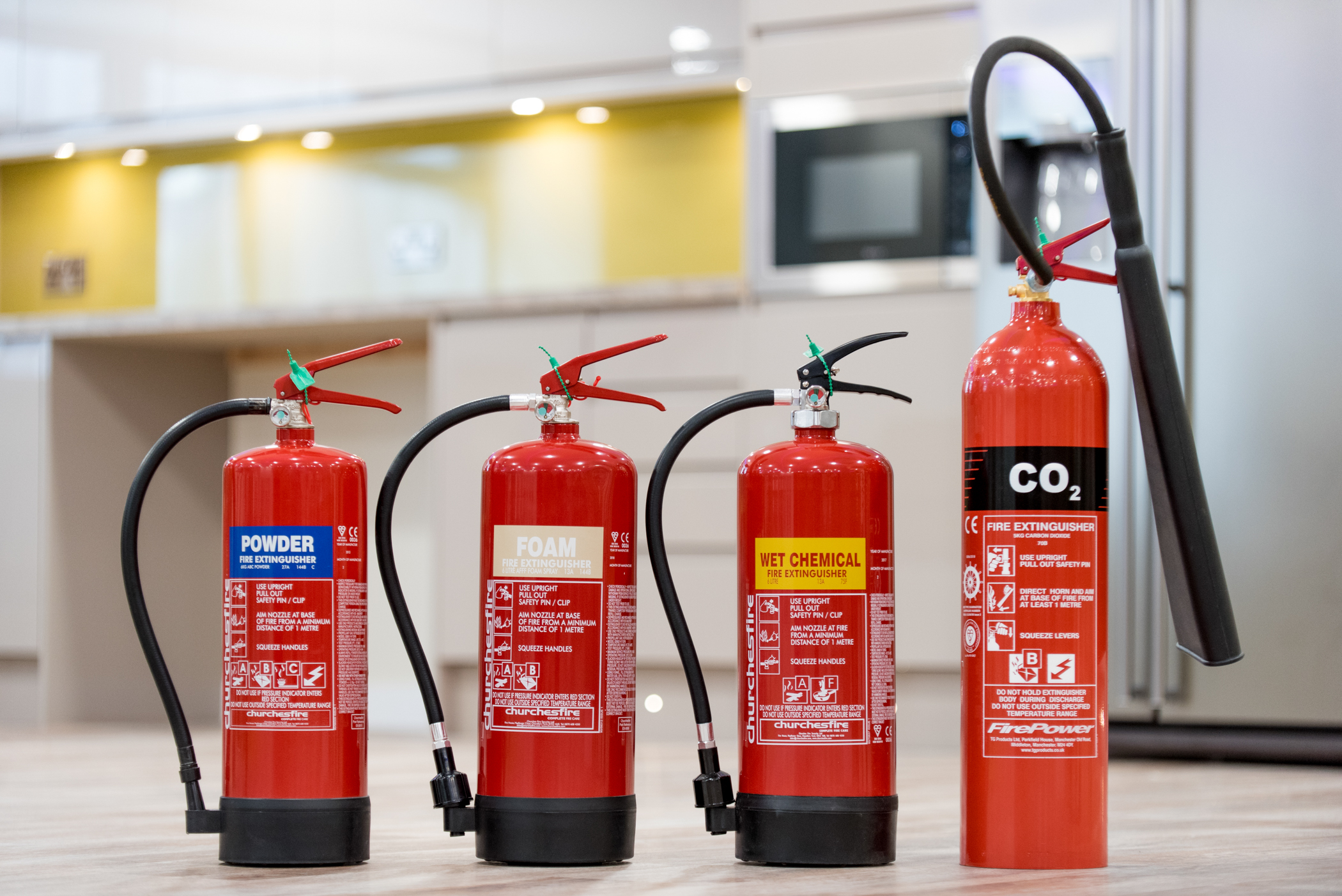
How often do my fire extinguishers need servicing?
Fire extinguishers should be serviced by a suitably competent person on an annual basis. There are two main types of service – a basic service which is carried out annually, and an extended service, which on most extinguishers is carried out every five years. A basic service is a series of visual inspections and some simple calculations, whereas an extended service is a full performance test, including a ‘discharge’ test. Once discharged, the extinguisher requires re-filling.
Depending on the type of extinguisher and its contents, a swap-out or new extinguisher maybe a better option due to environmental regulations.
| Basic Service | Extended Service | |
|---|---|---|
| Water | 1 year | 5 years |
| Water w/ additive | 1 year | 5 years |
| Foam | 1 year | 5 years |
| Powder¹ | 1 year | 5 years |
| CO2 | 1 year | 10 years² |
| Wet Chemical | 1 year | 5 years |
| Specialist Powder | 1 year | 5 years |
| Aerosol Type³ | 1 year | 5 years |
-
- ¹ - Factory sealed-type powder extinguishers require an extended service every 10 years.
- ² - CO2 extinguishers require an overhaul every 10 years. This involves a series of complex factory tests by the manufacturer.
- ³ - Aerosol type extinguishers are generally smaller units, most commonly found in vehicles.
In nearly all cases, replacement of the above types is generally cheaper and easier than performing extended servicing & overhauls.
Are there any differences in servicing methods between extinguishers?
Yes – some older style extinguishers contain a gas-filled cartridge and these cartridges must be swapped at least every 10 years. As they aren’t under pressure until operated, these can be opened up and inspected internally. These however are becoming increasingly rare.
Carbon dioxide (CO2) extinguishers are classed as high-pressure vessels and must undergo an overhaul every 10 years which involves a series of tests at the manufacturer’s facility. In practice it’s cheaper to replace and we can send the old CO2 extinguishers for recycling.
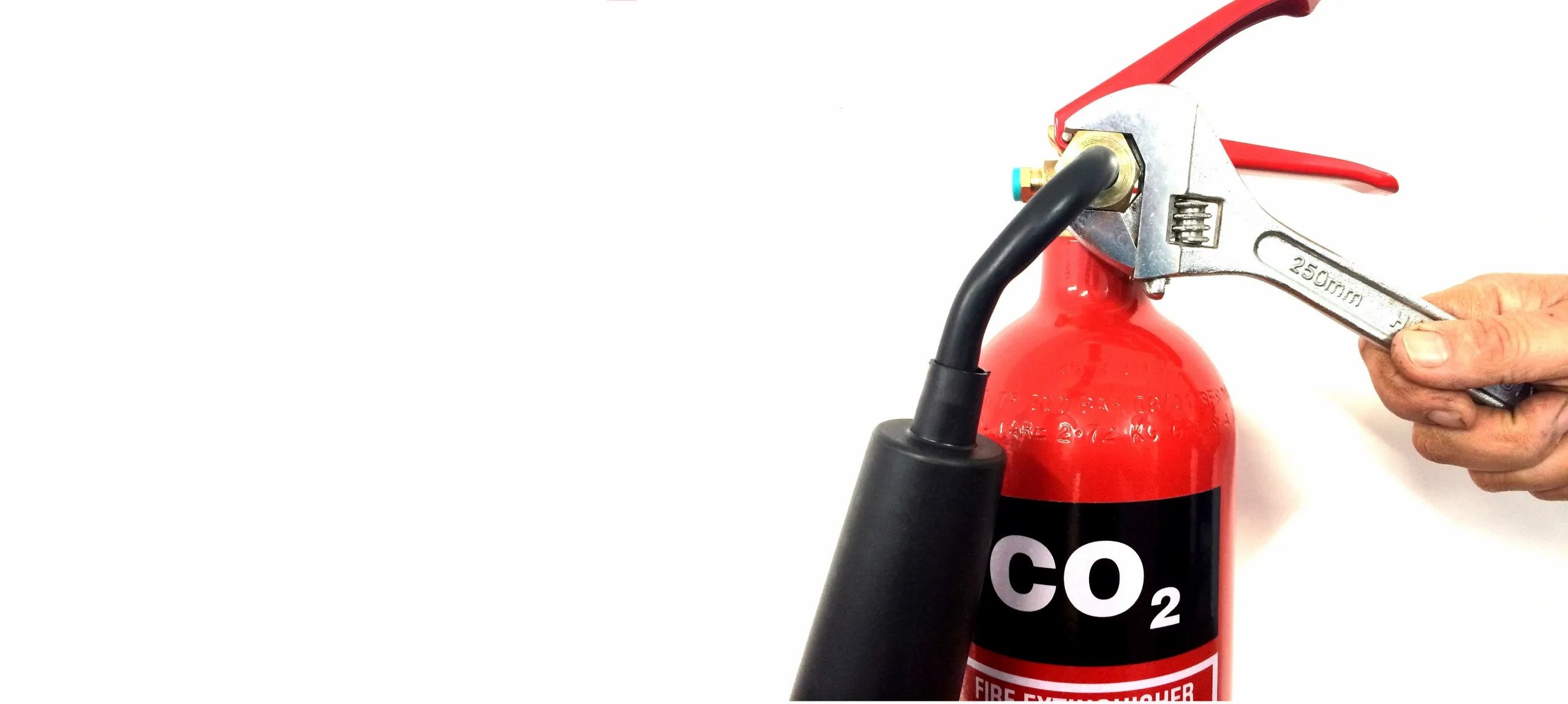
Is your fire extinguisher servicing due? Get in touch for a quotation or to arrange a site visit
Call us today on 0115 727 0160 or Get a Quote online
Frequently Asked Questions
What are the different colour codes on a fire extinguisher?
BSEN3 is the standard that dictates fire extinguishers should be 95% red with up to 5% of another colour to identify the type of extinguisher. The different colour codes are:
Water = Red
Dry Powder = Blue
Foam = Cream
CO2 = Black
Wet Chemical = Yellow
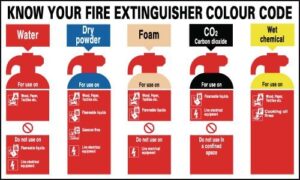
Why are there different types of fire extinguisher?
Different types of fires have different characteristics. What they are fuelled by significantly alters how they must be extinguished. The different extinguishers are then located in different areas of the building to ensure that the risks of that area are sufficiently covered.
Are any fire extinguishers all purpose?
None can ever be sold as ‘all purpose’ as some specialist materials will require specialist extinguishing equipment, however some extinguishers are ‘multi-purpose’ and can extinguish different types of fires.
What types of fire extinguishers can be used on what types of fires?
This handy graphic shows you exactly what type of fire each extinguisher can be used on. If you’re not sure or if you have specialist risks such as flammable metals, please get in touch for details of our risk assessment & fire extinguisher selection service.
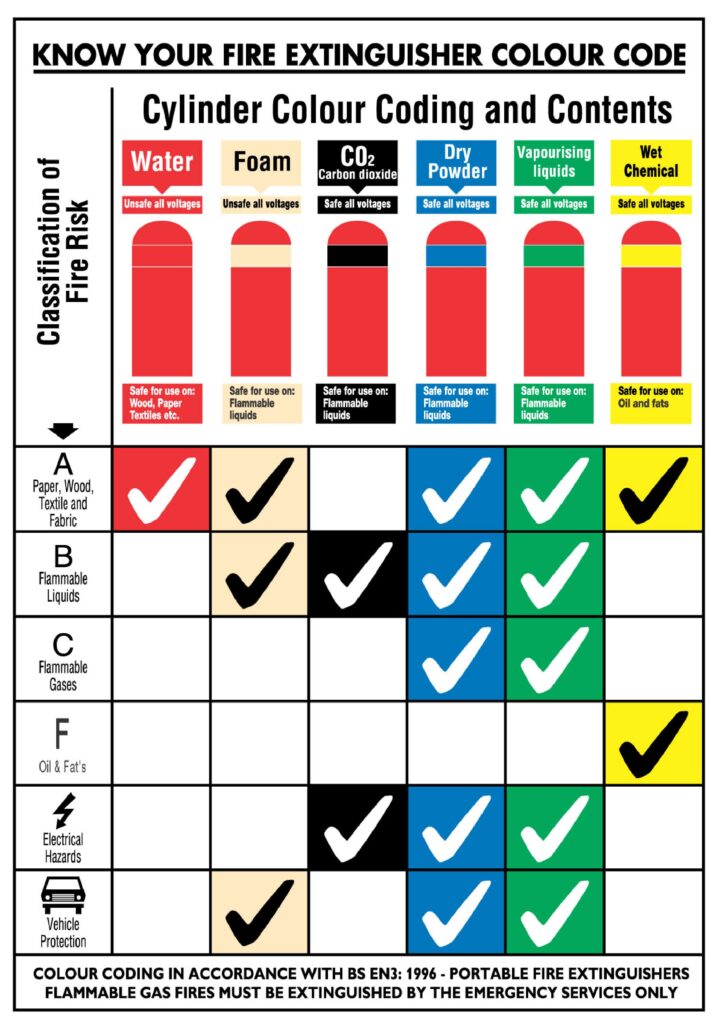
How often should a fire extinguisher be serviced?
At least once per year, with annually being the most common frequency of servicing.
How do you dispose of a fire extinguisher?
Fire extinguishers must be disposed of by a competent person. If they are under pressure they are extremely dangerous and should never be placed in general waste. The contents must be disposed of in different ways depending on what they are. The bodies, once empty and unpressurised, are mostly metal and will be sent for recycling once made safe by a fire extinguisher engineer. To make it simple we can deal with this for you while servicing.
Can you refill extinguishers?
Mostly, yes, although it depends on the type. Refilling Dry Powder extinguishers is not straightforward as the valves require cleaning to make sure the power has not contaminated it on discharge. Aerosol type extinguishers are sealed and cannot be serviced. For some types, it’s cheaper to buy new & recycle the old extinguisher than to refill.
What height should extinguishers be stored at?
Any extinguishers over 2kg, and a 2kg CO2, should have their handles mounted at 1m from the floor level.
Any fire extinguishers smaller than this, should have their handles mounted at 1.5m from the ground.
[1] The Health and Safety at Work etc. Act 1974 - Nottinghamshire Live - Nottinghamshire Fire & Rescue False Alarms